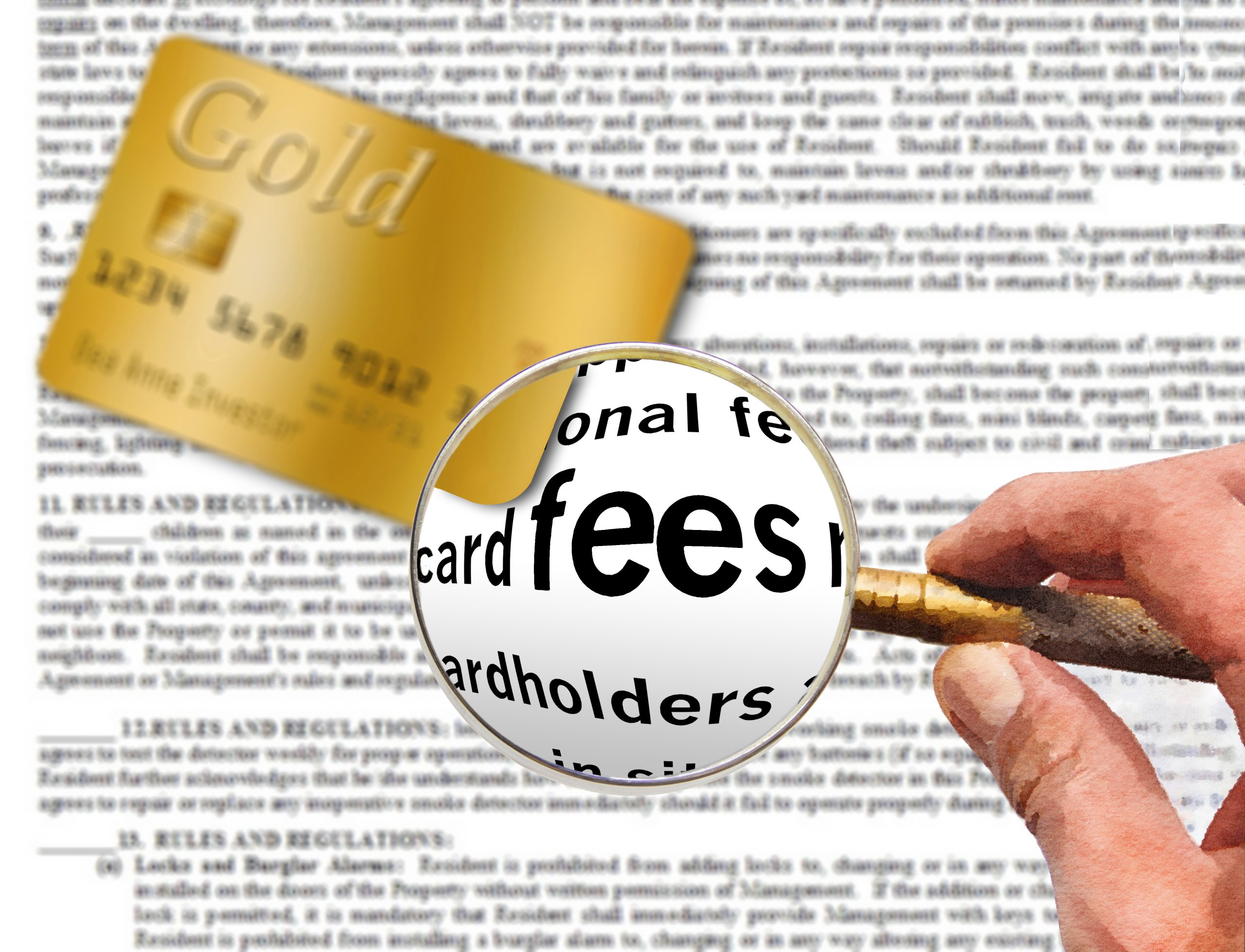
Save Thousands by Optimizing Credit Card Processing Fees
Jul 11, 2022 2 minute Read
If you’re a merchant, the fees on your merchant services statement can be an important indicator of how well your business is doing.
But, if you’re unfamiliar with these charges and how they work, it can be difficult to understand what’s happening with your account.
In this article, we’ll break down how these credit card processing fees affect businesses and why knowing about them is so important. We’ll also uncover some ways you can reduce or reduce these fees completely so you can gain back thousands.
This post is a follow-up to our recent podcast episode with Chad Hamzeh. You can check that out here.
Does your credit card processing statement say everything you need to know?
The processing statement is the document you’ll receive each month from your provider, but it’s not the only thing that matters.
It’s the place where you can see exactly how much you’re paying for each transaction, as well as how much each charge contributes to your overall processing fee.
It should include, at the very least:
- Transaction charges (e.g., interchange charge, assessment fees and other fees)
- Service charges (e.g., payment gateway and terminal rental fees)
- Other charges (e.g., gateway or terminal setup fees or cancellation fees)
The payment processing fees you pay monthly go a long way to helping your business grow.
If you’re a business owner, you know that fees are a necessary part of running your business. You pay fees to the government and other entities to operate your company.
Likewise, credit card processors are service providers who charge via fees (flat-rate pricing, tiered pricing, and interchange pricing structures).
These payments come in two forms: interchange rates and assessment fees.
Interchange rates are the portion of each transaction that goes directly back to the credit card brand (Visa, MasterCard, Discover) or American Express—this can be anywhere from 2% – 8%.
The rest of what you pay is called an assessment fee; it helps cover costs associated with marketing and promoting this type of payment option for retailers’ customers as well as covering fraud prevention measures and improvements in technology used by merchants in general. These are surcharges that typically include service fees, statement fees, compliance fees, and more. Each credit card processing company has their own fee structure, so you’ll see different pricing depending on the present transactions.
Many merchants don’t even realize when this levy is taken out because it’s bundled into their monthly billings from their merchant services provider rather than being listed separately on every transaction receipt like interchange fees are displayed before each purchase made using credit cards in stores.
The interchange rate on your statement isn’t the same as the discount rate you pay.
The interchange rate on your statement isn’t the same as the effective rate you pay.
When you sign up for a merchant account, you’ll see that your processing fees are based on an “interchange rate,” which is what’s known as the amount paid to acquirers—the companies that process credit card transactions on behalf of merchants. This interchange-plus pricing can vary widely depending on what type of business you run and whether or not it accepts cards issued by certain banks.
However, once those charges are applied, they’re what make up your discount rate—the amount you actually pay in fees and commissions after discounts have been taken off either by processors or other parties involved in processing credit card payments (like issuing banks). These are called assessment fees.
Don’t be confused—”discount” doesn’t mean amount saved, it means the amount taken from the total transaction and paid to the processor. You still pay that amount, and the higher the rate is the more you pay to your processor.
The discount rate includes the interchange fee as well as all the other fees. So don’t get tricked when you see a really low interchange rate. Your payment processor could very well make up for it with other fees stacked on top.
Some merchants are charged an extra fee for accepting mobile wallet payments.
A mobile payment is a transaction that’s processed with a smartphone or other mobile device. With these payments, you can pay for your purchase by tapping your phone to an electronic card reader at the point-of-sale (POS) terminal or with a digital wallet payments on websites like Apply Pay or Google Pay.
Mobile wallet payments can be convenient and speed up checkout times, but they often come with additional fees if your acquiring bank or payment processor doesn’t support them.
Sometimes the fees can be worth it, but only if you want to take advantage of the service they back.
It’s important to be aware of the fees you’ll have to pay, because it’s possible that the more features you want, the higher your monthly bill will be.
If a feature makes your life easier or helps you grow your business in some way, it might be worth paying extra for.
For example: if you want to accept a particular type of card (such as American Express) or accept a currency outside your region, the fee is worth it.
If there are certain types of payments that make up most of your sales (like online payments or mobile app payments), these could also end up costing more if they’re not included in basic pricing models with other providers.
A lot of merchants end up paying a ton in fees for processing services they will never use. Now is a good time to go through your metrics and see what you need, what you don’t need, and what you want. This can help eliminate credit card processing fees and save you money every month.
These fees may be added to the statement without notifying you.
Processing fees are often not transparent and may change without warning, especially if you’re using a third-party processor. This can make it difficult for you to budget for processing costs.
Monthly minimum charges — Some processors charge a monthly minimum fee, even if your business only processes a few transactions each month. If you don’t process enough transactions, the minimum fee could eat up all of your profits.
Chargeback fees — When a customer disputes a charge on their credit card statement, this is known as a chargeback. If you lose an excessive number of chargebacks, you could end up paying a hefty fee — sometimes up to $100 per disputed transaction!
Sales tax collection — If you’re responsible for collecting taxes from customers who buy goods and services with a credit card, it’s important to know whether or not your processor will collect sales tax automatically or if they’ll leave it up to you to figure out how much money needs to be collected and remitted on behalf of customers who pay with plastic.
Shop around for a better deal either with your current provider or with a new one and ensure you’re in contract with a processor that understands your needs.
A no-fee merchant services provider or payment processor is a scam.
Be wary of any company that offers free merchant services.
There’s always a fee. When you see “no-fee” that provider might be referring specifically to no monthly fees or no transaction fees.
But in the end, you’ll pay way more than you expect. We can break it down like this:
- No monthly fees = huge transaction fee markups
- No transaction fees = insanely high flat-fee monthly processing rate
Neither are beneficial to any e-commerce business whatsoever. If you are attracted to no-fee processors, it could be that you, instead, need a bad credit merchant account.
Be specific with your needs. Avoid scams.
The fee information on your statement is important.
This information on your statement is also important for understanding how your merchant services work. The fee statement from your processor should include the following:
- The total of all fees charged to you
- How much was paid in setup costs and monthly maintenance fees (if applicable)
- How many transactions were processed during the billing period and what the average transaction size was. This can help you extrapolate how much money will be taken out of your account each month, as well as determine if there are any unexpected spikes in activity or payments.
Your risk of chargeback and fraud is greatly affected by the type of card you use and the amount you accept.
When you accept a payment, you are also accepting that there’s a chance it could be returned. The more you accept, the greater the risk of fraud and chargeback.
When deciding how much to authorize on a transaction (and thus how much risk to take), consider the following factors:
- The type of card being used. Certain cards are riskier than others because they have higher rates of fraud or chargebacks associated with them. For example, credit card networks like Visa and MasterCard tend to have higher rates than other credit or debit cards. These transactions carry greater potential for fraud—hence why they come at higher rates when accepting them via merchant services providers like Square, Stripe, or PayPal.
- The amount being charged. The amount a cardholder wants to spend in one single transaction also carries a risk. The higher the amount, the greater the risk. Some processors even flag transactions above a certain amount immediately. To avoid this, you can break up the charge into multiple, lower transactions. But before doing that, have security measures in place like PCI-compliance and customer verification services.
Many merchants pay into a rolling reserve, but don’t ask for their money back which can result is losing tens of thousands of dollars.
A merchant reserve account is an account set up by a merchant processor or bank that collects money from sales transactions until there’s enough money to cover any potential chargebacks or fraud claims issued against them.
When merchants receive credit card payments through their processing company, they’re required by law to pay the processor a fee per transaction (this varies depending on the type of business).
The processor then holds onto part of each transaction until there’s enough money in their reserve account to cover all potential chargebacks or fraud claims issued against them.
Some merchants, like high-risk merchants, are required to have a reserve due to the likelihood of chargebacks. You could be high risk due to the industry you operate in or because of a highly transaction volume. But the money in your reserve isn’t permanently tucked away.
If you have good processing for 6 months or so, you can contact your provider and ask to be paid back a percentage or lower the cap.
The best way to optimize your credit card processing fees is to use a provider that
Merchant account and payment processing fees are one of the biggest concerns for small business owners. It’s important to understand these fees, because they can add up over time. The good news is that there are plenty of ways to save money on your monthly statement. You just need to know where and how to look for them!




